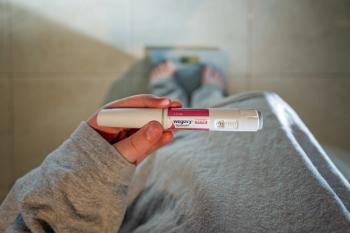
Tackling the Uncertainties in Schools Caused by the Delta Variant
A press briefing from the Infectious Diseases Society of America focused on the concerns raised by the delta variant and its potential impact on schools.
In the early summer of 2021, the coming school year seemed like it would be radically different from the one that had just ended. Adult vaccination rates continued to be relatively high. A vaccine was available to children as young as 12 years of age and appeared to be highly effective against variants. Then the highly infectious delta variant, along with a large decrease in the vaccination rate, changed the landscape again. The Infectious Diseases Society of America (IDSA) held a press briefing to discuss what this all means for 2021-2022 school year.
Jason Newland, MD, Med, professor of pediatrics and infectious disease at the Washington University School of Medicine in St. Louis, Missouri, stated that a lot more children are being diagnosed with COVID-19. The August 19, 2021, to August 26, 2021, weekly report from the American Academy of Pediatrics found 203,962 pediatric cases for the time period and that children accounted for nearly a quarter of the total weekly reported cases. Newland stressed that the layered approach of masking, social distancing, vaccination when eligible, ventilation, and doing activities outdoors when possible is the best approach to prevent transmission. He noted that in several schools that had in-person classes during the winter surge and also used those techniques had a transmission rate of just 1%, in comparison to the 50% transmission rate seen with earlier variants when no mitigation strategies were used.
Noelle Ellerson Ng, associate executive director of policy and advocacy for AASA, the School Superintendents Association in Alexandria, Virginia, said that the start of school has been a mixture of the usual excitement with worries about the highly infectious nature of the delta variant and what schools are doing to keep children safe. She said that combining the know-how of educations and public health experts can lead to effective mitigation policies for districts. Creating local mitigation strategies is the solution that would work best. Ng noted that some state-level officials have taken a heavy-handed approach that wasn’t necessary.
When discussing the vaccine, Newland said that the vaccination rate required for herd immunity is unknown, but that the current rate of 52% is assuredly not close enough. He recommended that clinicians and other health officials keep promoting and recommending the vaccine for the population that is currently eligible and that providers should start having conversations about the vaccine with families who have children aged younger than 12 years, to ensure a high rate of administration when it’s authorized.
The briefing closed with a look at the lack of uniformity in masking seen in schools. Newland pointed to the large number of children who were negatively impact with remote learning and that a lack of mask mandate could mean a sizable portion of children need to return to a learning environment that did not work. Ng said that many children have been comfortably and correctly wearing masks for well over a year and that it’s not children who are having trouble wearing masks. She noted that there are thousands of school districts with a variety of dress codes, which do not face problems with enforcement, and that mask mandates can be seen as a dress code for the face. Newland said that any mask that meets the recommendations from the Centers for Disease Control and Prevention should work for mitigation strategies, as long as the mask is worn properly over the chin and nose.
Reference
1. Newland J, Ng N. Back-to-school + delta variant = uncertainty. Infectious Diseases Society of America Press Briefing. September 2, 2021; Online.
Newsletter
Pharmacy practice is always changing. Stay ahead of the curve with the Drug Topics newsletter and get the latest drug information, industry trends, and patient care tips.


















































































































